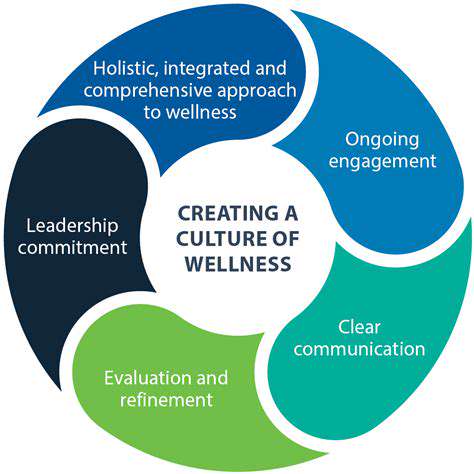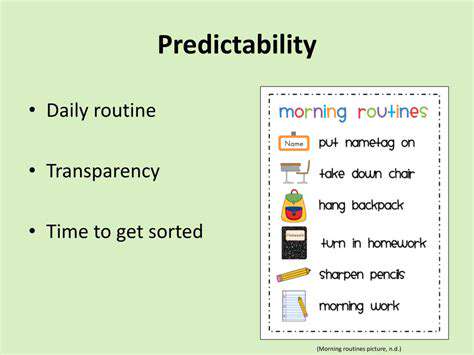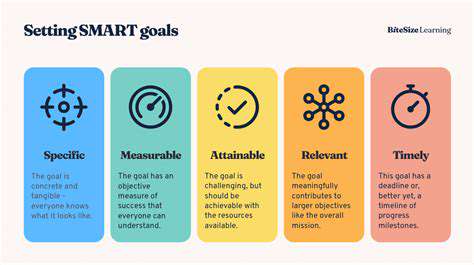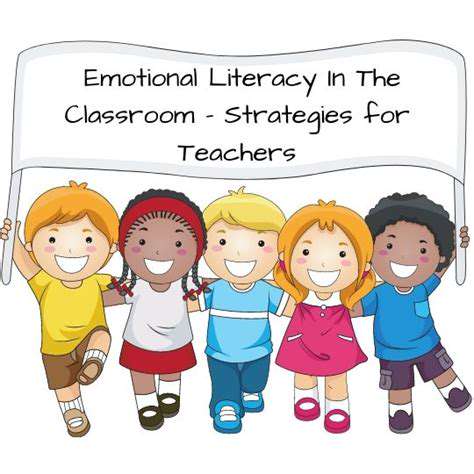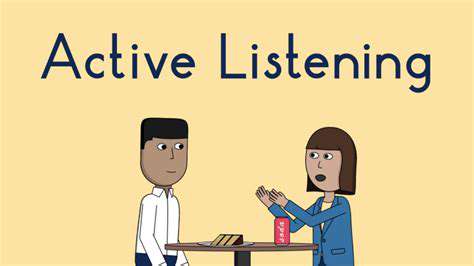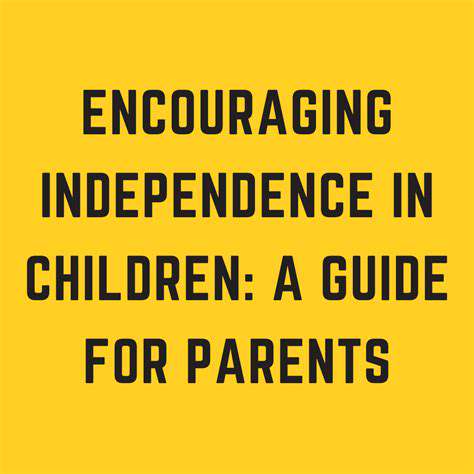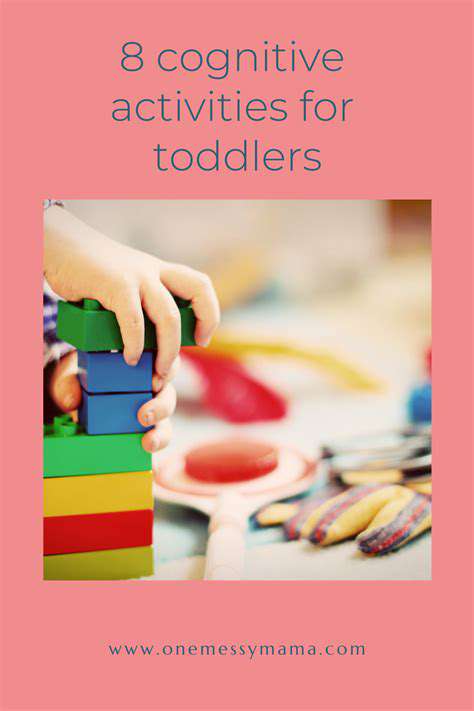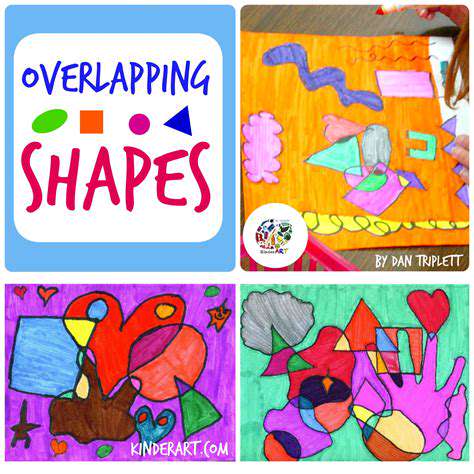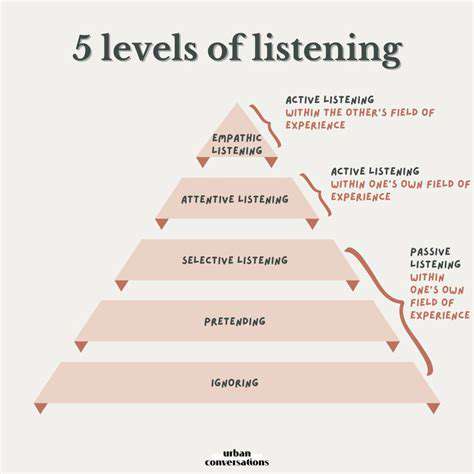Encouraging Listening and Focus in Preschool Settings
Table of contents
Listening skills are essential for children's development and communication in preschool.
Active listening enhances children's engagement and fosters critical thinking abilities.
Creating a supportive environment encourages effective listening and social interactions.
Mindful activities improve focus and listening capabilities in early childhood education.
Movement and sensory experiences enhance children's learning and listening skills significantly.
Active listening fosters children's self-esteem and promotes effective communication skills.
Structured routines provide security, aiding children's focus and emotional regulation.
Interactive activities like storytelling enhance listening and engagement among preschoolers.
Parent involvement reinforces listening skills learned in preschool settings.
Ongoing assessments help tailor listening activities to individual children's needs.
Introduction to Listening and Focus in Early Childhood Education
Understanding the Importance of Listening Skills
Listening skills in early childhood education play a critical role in a child's overall development. These skills help children process and interpret spoken language, which lays the foundation for effective communication. Educators and caregivers should prioritize the cultivation of listening abilities, as they are essential for social interactions and academic success.
When children engage in active listening, they demonstrate a willingness to understand and respond to what others say, fostering a rich learning environment. Listening also promotes the development of critical thinking skills, as children learn to analyze and evaluate information presented to them. Pay attention to how children respond when asked questions during storytime activities; their engagement is a strong indicator of their listening capabilities.
Moreover, early childhood is a prime time for developing empathy and emotional intelligence, and active listening is key in this process. By understanding verbal cues and emotions from their peers and teachers, children can better relate to those around them and build meaningful relationships. This connection nurtures a sense of community and cooperation within preschool settings.
Furthermore, listening skills support language development, which enhances vocabulary and literacy rates. As children listen to stories, instructions, and conversations, they gain a wider range of words and phrases, allowing them to express themselves more effectively. Continuous exposure to varied linguistic contexts enriches their communication skills immensely.
Ultimately, fostering listening skills in preschool lays a groundwork that benefits children throughout their lives. Engaging activities, combined with a supportive atmosphere, enable children to thrive not only academically but also socially and emotionally. Educators who recognize this importance can implement strategies to enrich their curriculum effectively.
Creating an Engaging Listening Environment
Creating an environment that promotes listening goes beyond simply encouraging children to be quiet. It involves crafting a space where children feel safe and valued, allowing them to engage in conversations with each other and adults. Implementing a variety of auditory stimuli, like music and storytelling, can capture children’s attention and invite them to participate in discussions.
Using interactive reading techniques, such as asking open-ended questions and encouraging predictions during storytime, can enhance children's listening capabilities. Teachers can model active listening by demonstrating their attentiveness to children's responses and showing genuine interest in their ideas. This behavior encourages children to practice the same skills in their interactions.
In addition, utilizing visual aids like puppets or props while reading stories can significantly enhance engagement. Visual stimuli help children connect more deeply with the narrative and anticipate events, spurring active listening. The incorporation of games that require children to listen carefully, such as "Simon Says" or auditory scavenger hunts, can make listening enjoyable and educational.
A classroom layout also plays a crucial role in promoting a listening culture. Providing comfortable seating areas and minimizing distractions help children to focus on the speaker. By maintaining a structured routine that includes specific listening activities, children learn to recognize when it is appropriate to listen attentively and when they can express their thoughts.
Thus, creating an engaging listening environment supports children's cognitive and emotional development. By implementing thoughtful strategies, educators can significantly enhance children's ability to listen, learn, and collaborate effectively within the preschool setting.
Encouraging Focus Through Mindful Listening Activities
Mindful listening activities can capture children's attention and foster a sense of calm within the classroom. Simple practices, such as guided breathing exercises before group discussions or storytelling, can help kids center their thoughts and prepare for focused listening. These activities introduce children to the concept of mindfulness, enhancing their awareness of sounds and their surroundings.
Incorporating auditory games that require children to listen attentively helps develop focus. For example, activities like "What do you hear?" use sound-focused explorations, allowing children to identify and discuss different noises. Such games cultivate observation skills, as students learn to filter sounds and concentrate on specific auditory information in their environment.
Storytelling sessions centered around listener engagement can also improve focus. Teachers can invite children to participate by describing characters or making sound effects, ensuring everyone remains actively involved. This participation helps children practice sustained attention, as they must listen carefully to contribute meaningfully to the storytelling experience.
Another effective technique is to incorporate visual and auditory cues simultaneously. For example, playing calming music while children work on crafts can enhance their ability to concentrate. The music acts as a backdrop that promotes a focused atmosphere while stimulating their creative processes, effectively merging auditory learning with hands-on activities.
Ultimately, employing mindful listening activities not only nurtures focus in preschool settings but also promotes overall well-being. Children develop essential skills for future learning environments, such as patience, self-awareness, and increased cognitive capabilities. By fostering these skills, educators set the stage for children to thrive academically and socially throughout their lives.
Creating an Engaging Environment
Understanding the Importance of an Engaging Environment
Creating an engaging environment is vital in preschool settings as it lays the foundation for effective learning. The atmosphere in which children learn significantly influences their willingness to participate and explore. By ensuring that the surroundings are stimulating, educators can foster curiosity and concentration among young learners. This kind of environment encourages children to engage with both the materials and their peers actively.
Research in early childhood development emphasizes that children learn best when they are actively involved in the learning process. An engaging environment incorporates various sensory experiences that accommodate different learning styles. By recognizing that each child is unique, educators can tailor their approach to cater to diverse needs, thus enhancing children’s overall engagement.
Preschool is often a child’s first exposure to structured learning environments. Therefore, it is crucial that these settings not only provide educational content but also offer a safe and welcoming atmosphere. When children feel secure in their surroundings, they are more likely to take risks, ask questions, and express their thoughts freely. An engaging environment cultivates confidence and self-expression.
Moreover, an engaging environment encourages social interaction. It promotes cooperative play and teamwork, essential skills for young children. When preschoolers are placed in vibrant, interactive spaces, they are more inclined to communicate with their peers, share ideas, and develop essential social skills. This interaction is beneficial for building friendships and understanding group dynamics.
In summary, an engaging environment is an integral component of effective preschool education. By fostering an atmosphere that encourages exploration, interaction, and self-expression, educators can help preschoolers thrive both academically and socially during their crucial developmental years.
Design Elements That Promote Engagement
Design elements play a critical role in creating an engaging environment in preschool settings. Color schemes, layout, and the use of materials all contribute to the atmosphere that children experience. Bright, visually appealing colors can stimulate children's curiosity and enthusiasm, while thoughtful spatial arrangements can facilitate movement and exploration.
Learning stations can be strategically placed to cater to different activities, such as art, reading, or science experiments. Each station should be designed to encourage hands-on interaction where children can physically manipulate objects and engage in creative play. Proper organization ensures that children can easily access materials, thus promoting independence and decision-making skills.
In addition to visual elements, incorporating natural materials and outdoor learning spaces is essential for engagement. Nature-based environments allow children to explore, investigate, and connect with the world around them. Outdoor settings offer opportunities for physical activity, exploration, and sensory experiences, which contribute positively to children's growth and development.
Flexible and multifunctional spaces are also crucial in promoting engagement. By creating areas that can easily be adjusted to meet various learning activities, educators allow children the freedom to explore different interests and activities. This adaptability fosters creativity and encourages children to think critically about their choices in a supportive environment.
Ultimately, thoughtfully designed spaces that prioritize accessibility, safety, and interaction can significantly enhance children’s engagement levels. By focusing on these design elements, educators can create an environment that not only captivates children’s interests but also supports their emotional and intellectual growth.
Strategies for Encouraging Active Participation
To create an engaging environment, it is essential to implement strategies that encourage active participation from preschoolers. One effective method is to incorporate play-based learning, which allows children to explore concepts through hands-on activities. This approach nurtures curiosity and helps children develop critical thinking skills as they engage with materials and their surroundings.
Another strategy involves introducing open-ended questions during activities. By asking children thought-provoking questions, educators can stimulate discussion and encourage critical thinking. This practice not only fosters participation but also helps children articulate their thoughts, enhancing their communication skills in the process.
Additionally, incorporating music and movement into the daily routine can significantly enhance engagement levels. Singing songs, dancing, and participating in rhythm-based activities encourage children to express themselves and connect with their peers, creating a sense of community within the classroom. Engaging the body alongside the mind supports holistic learning and development.
Moreover, establishing clear routines and expectations can guide preschoolers toward active engagement. When children understand what is expected of them and the structure of daily activities, they are more likely to participate confidently. Visual schedules and consistent cues can be helpful in reinforcing understanding and providing a secure framework within which children can explore.
Lastly, celebrating children’s successes, no matter how small, reinforces their engagement. Positive reinforcement through praise and encouragement fosters a supportive environment where children feel valued. This validation motivates them to continue participating actively and fosters resilience, helping them overcome challenges and keep their attention focused.
Role of Educators in Shaping Engagement
The role of educators in creating an engaging environment cannot be overstated. Educators are not just facilitators of knowledge; they are active participants in shaping a child’s learning experience. By modeling enthusiasm and a genuine interest in the activities at hand, educators can inspire children to engage with the content and fellow learners more deeply.
Building relationships with preschoolers is crucial for fostering an engaging atmosphere. Taking the time to understand each child's interests, strengths, and challenges allows educators to create personalized experiences that resonate with the children. This connection enhances trust and encourages children to participate actively in learning activities.
Additionally, educators can employ varied instructional strategies to cater to diverse learning styles. Combining visual aids, interactive play, and experiential learning helps reach all children effectively. By varying their approaches, educators maintain children’s interest and encourage participation by ensuring that lessons are both fun and educational.
Continuous professional development is another way educators can enhance their skills in creating engaging environments. By staying updated on the latest research and best practices in early childhood education, educators can implement innovative strategies that better support children's engagement and participation.
Ultimately, an educator’s passion and dedication are infectious. When educators demonstrate a love for learning and foster an inviting atmosphere, children are more likely to mirror that enthusiasm. By investing in their professional growth and creating meaningful connections with students, educators play a pivotal role in shaping an engaging environment conducive to learning and growth.
Incorporating Movement and Sensory Experiences
Understanding the Importance of Movement in Learning
Movement is a fundamental aspect of early childhood education, playing a crucial role in cognitive development. Research indicates that engaging children in physical activities promotes brain function and enhances learning capacity. By incorporating movement into lessons, educators can create a dynamic learning environment that stimulates curiosity and keeps preschoolers focused.
Incorporating movement into classroom activities allows children to release pent-up energy, making them more ready to engage in listening and learning tasks. Activities like dancing, stretching, or simple exercises can create a more conducive atmosphere for absorption and retention of information. This synergy between movement and learning can significantly improve a child's overall educational experience.
Moreover, physical movement often aids in the development of fine and gross motor skills. Through activities that require hopping, skipping, or reaching, children are not only burning energy but also refining their coordination and balance. These skills are essential as they lay the groundwork for future learning and everyday tasks.
Ultimately, when movement is intentionally woven into the curriculum, it shapes a preschool setting that prioritizes active engagement. Such an approach not only captures their attention but also embeds lasting memories, contributing to a joyful and holistic learning experience.
Enhancing Sensory Experiences for Better Focus
Children learn through their senses, making sensory experiences a vital component of preschool education. By creating opportunities for children to explore various textures, sounds, and sights, educators can enhance focus and listening skills. Sensory bins filled with rice, beans, or sand can provide tactile experiences that captivate young learners’ attention.
Visual aids like colorful charts and interactive displays can also stimulate children's imagination while fortifying their understanding of new concepts. Utilizing a variety of sensory experiences allows teachers to cater to different learning styles, ensuring all children are engaged. When children are more engaged, they tend to listen better and contribute more actively to discussions.
Incorporating auditory experiences is equally essential. Integrating music, rhythmic clapping, or chanting into lessons can sharpen listening skills and reinforce language development. Children often respond well to these auditory stimuli, which helps maintain their focus during classroom activities.
Additionally, changing sensory experiences can minimize distractions and maintain a steady flow of concentration. For instance, alternating between quiet reading times and more stimulating activities can help renew children's interest and sustain their listening abilities. By thoughtfully designing a sensory-rich classroom, educators provide children with a delightful and engaging way to learn.
Practical Strategies for Combining Movement and Sensory Learning
To successfully incorporate movement and sensory experiences in preschool settings, teachers can implement a variety of creative strategies. One effective method is to create "movement breaks" within the daily schedule. These breaks can involve simple stretching, dancing, or moving to songs, giving children a chance to lead their focus back to the lesson comfortably.
Another strategy is the use of themed learning stations that engage different senses. Each station can combine an element of movement with a sensory experience, such as an obstacle course that includes visually stimulating objects or textures to feel. This not only encourages playful exploration but also fosters collaboration among peers, as children navigate the stations together.
Teachers can also utilize storytelling sessions that involve movement and sensory interaction. For example, while narrating a story, teachers can prompt children to act out specific actions or use props that stimulate touch or sound. This immersive approach captures children’s imagination and keeps them actively engaged, reinforcing their listening skills throughout the narrative.
Finally, parent involvement plays a crucial role in sustaining movement and sensory engagement outside the classroom. Teachers can provide families with resources and ideas for activities that blend learning with movement at home. This collaboration between home and school supports children's development, reinforcing the idea that learning happens everywhere and at all times.
Utilizing Effective Communication Techniques
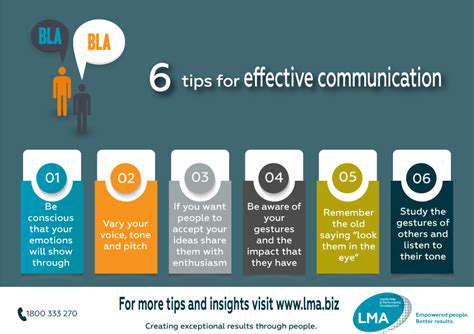
Understanding the Importance of Active Listening
Active listening is a crucial skill in fostering positive interactions in preschool settings. It invites children to engage and express themselves while feeling heard and valued. When educators practice active listening, they model respect and validation, which can enhance children's self-esteem. Children who feel understood are more likely to develop better communication skills themselves.
Moreover, active listening encourages children to focus on the speaker and the message being conveyed. This practice helps in improving their concentration levels, enabling them to absorb ideas better. As educators invest time in listening, they are also demonstrating the importance of patience and understanding in communication.
Using techniques such as paraphrasing or nodding can further reinforce a child’s intent to communicate. By acknowledging their thoughts and feelings, educators create a safe environment for open discussion. In such an atmosphere, children become more confident in expressing their ideas, leading to enriched learning experiences.
Ultimately, mastering active listening paves the way for constructive feedback and meaningful dialogue within the classroom. This can significantly enhance social skills among preschoolers as they learn to listen, respond, and interact positively with their peers.
Implementing Nonverbal Communication Skills
Nonverbal communication is an integral part of how messages are received in preschool environments. Body language, facial expressions, and gestures all play a significant role in conveying feelings and intentions. Educators can utilize these nonverbal cues to reinforce verbal messages effectively, making communication clearer and more impactful.
For instance, using a warm smile can help children feel welcomed and comfortable in expressing themselves. Similarly, maintaining eye contact can indicate that the educator is genuinely interested in the child’s contributions. The use of appropriate gestures, like thumb-ups or claps, can also encourage and motivate children when they participate in activities.
Moreover, being aware of one’s nonverbal signals is equally important. Educators should ensure that their own body language aligns with their spoken words to avoid sending mixed messages. A relaxed posture and open arms can foster an inviting atmosphere conducive to communication.
In summary, mastering nonverbal communication equips educators with tools to enhance their interactions with preschool children. By and large, these skills bridge the gap between verbal messages and emotional connections, contributing to a more engaged classroom.
Encouraging Open Dialogue Through Questions
Asking open-ended questions in preschool classrooms is a powerful technique to promote dialogue and critical thinking. Open questions invite children to elaborate on their thoughts and feelings, encouraging them to explore ideas creatively. By doing so, teachers can stimulate an engaging atmosphere where children's curiosities take the center stage.
Moreover, when children are invited to share their perspectives, they feel valued and respected, which strengthens their confidence in communication. This approach not only enhances verbal skills but also cultivates cognitive development as they learn to articulate their ideas. Teachers should aim to ask questions that require more than a ‘yes’ or ‘no’ answer, which keeps the conversation dynamic and inclusive.
Teachers can also utilize prompts related to current lessons to help children connect their experiences with academic content. This strategy promotes a sense of relevance, as children see how their ideas and feelings are critical to classroom discussions. Furthermore, it can encourage collaboration among peers as they share diverse thoughts and hear from one another.
Ultimately, fostering open dialogue through thoughtful questioning nurtures a culture of inquiry in preschool settings. As children learn to express themselves and respect diverse opinions, they begin to build essential communication skills that will serve them long into the future.
Building a Supportive Communication Environment
Creating a supportive communication environment is vital for enhancing listening and focus in preschool settings. This involves establishing ground rules that promote respect and active engagement. By laying a solid foundation of expectations, educators can create a space where children feel safe to communicate freely without fear of judgment.
Furthermore, incorporating routine activities such as circle time fosters a greater sense of community among children. During these activities, every child has the opportunity to share, listen, and learn from one another. This kind of structure not only encourages participation but also helps children learn essential social skills.
In addition to structured communication, embedding frequent feedback into daily interactions helps children understand the value of their contributions. Positive reinforcement reminds them that their voices matter, further motivating them to share their thoughts. Educators should always strive to provide constructive feedback, which helps guide children toward effective communication techniques.
In conclusion, building a supportive communication environment plays a pivotal role in the development of young children's communication skills. As they engage in respectful and meaningful exchanges, they learn the importance of listening and focusing, which are critical tools for their future interactions both inside and outside the classroom.
Implementing Structured Routines
Understanding the Importance of Routines
Structured routines provide children with a sense of security and predictability, which is particularly vital in a preschool environment. When children know what to expect, they are more likely to feel safe and comfortable, enabling them to focus better on learning tasks. This sense of security can lead to lower anxiety levels, which is crucial for fostering an atmosphere conducive to listening and engagement.
Research has shown that children thrive in environments where routines are established. They learn to anticipate transitions and become more independent in their actions. This not only supports positive behavioral development but also assists children in enhancing their listening skills as they become accustomed to the flow of activities and instructions given by teachers. By understanding when to pay attention, children can cultivate better focus during lessons.
Moreover, structured routines also play a vital role in emotional regulation. Young children often experience overwhelming emotions, and having a consistent routine can help them manage these feelings more effectively. When children know that they will have time for activities they enjoy, such as storytelling or play, they learn to regulate their emotions, which promotes better listening and engagement during less preferred tasks.
Components of Effective Routines
Effective routines in preschool settings incorporate various components that address different aspects of the children's daily experiences. For instance, morning routines might include greeting activities, circle time discussions, and interactive storytelling. These elements set a positive tone for the day and encourage collaboration among peers, which further enhances children's listening and focus.
Another essential component of effective routines is transition times. Clearly defined transition periods help children shift from one activity to another smoothly and efficiently. Teachers can utilize visual aids, such as timers or songs, to signal transitions. Incorporating such elements keeps children engaged and prepares them mentally for the new task, thereby promoting active listening during instruction.
Lastly, incorporating physical movement into routines can significantly enhance focus. Activities such as guided stretching or brain breaks provide children with a chance to release pent-up energy, making them more receptive to listening and learning when they return to seated activities. By balancing active and quiet times, teachers can create an engaging routine that caters to preschoolers’ natural energy levels and learning needs.
Tips for Implementing Routines in the Classroom
When implementing structured routines in a preschool setting, it is essential to introduce them gradually. Start by integrating small, manageable routines and allow children to adjust. Once they are comfortable, introduce more complex routines. It’s crucial to model the expected behaviors consistently so children can see the routines in action, helping them understand the flow of activities and what is expected from them.
Visual aids play a significant role in helping preschoolers grasp routines effectively. Utilizing picture schedules or charts can provide children with clear expectations for the day’s activities. These visual cues serve as reminders for children and can help them develop independence, promoting focus as they learn to check the schedule and be prepared for what’s next.
Lastly, reinforcing routines through positive feedback is key to maintaining engagement. Acknowledging and celebrating successful transitions or active participation encourages children to continue adhering to established routines. This not only builds their confidence but also fosters an environment where attentive listening and focus are deeply ingrained into the daily practice of learning.
Evaluating and Adjusting Routines
Evaluating the effectiveness of routines is a strategic process that allows educators to tailor the preschool experience to better fit the children's evolving needs. Regular observations of children's responses can help identify which routines are working well and which may require adjustments. Educators should pay attention to children's engagement levels during various activities to determine if they are adequately promoting listening and focus.
Feedback from both children and parents can provide invaluable insights regarding the routines in place. Teachers can conduct simple conversations to gauge children’s feelings about the daily schedule, asking them what parts they enjoy most. Parents can also share their observations from home, helping teachers understand how routine impacts children's behavior outside the classroom, thus allowing for modifications if needed.
Flexibility in routines is also essential. While consistency is vital, being adaptable to children's needs will create a responsive learning environment. Sometimes unexpected situations arise, such as a child experiencing a particularly challenging day. Educators may need to alter the routine to better suit the class’s mood or dynamics, which helps maintain a positive atmosphere where listening and focus are prioritized.
Promoting Active Listening through Interactive Activities
Understanding the Importance of Active Listening
Active listening is a crucial skill, especially in preschool settings where young children are developing their communication abilities. By fostering an environment that prioritizes listening, educators can significantly enhance children's learning experiences. When children engage in active listening, they are better equipped to comprehend instructions, follow directions, and participate meaningfully in group activities.
Moreover, active listening cultivates a sense of respect and empathy among peers, which is essential for social development. As young learners actively pay attention to their surroundings and the words of others, they begin to develop the cognitive skills necessary for conflict resolution and cooperation in group settings. Parents and caregivers also play an essential role in modeling this behavior at home to further enhance children's capacity for active listening.
Finally, fostering active listening helps reinforce language development. Children who practice listening skills are more likely to expand their vocabulary and improve their understanding of complex language patterns. By integrating playful and engaging activities that emphasize listening, educators can set the foundation for lifelong communication skills.
Interactive Activities to Enhance Listening Skills
One effective way to promote active listening is through interactive storytelling sessions. Stories engage children's imaginations and encourage them to listen attentively to the narrative. Teachers can invite questions and discussions afterward to ensure that children have processed the information. Utilizing props or visual aids related to the story can also enhance engagement and comprehension, making the listening experience more memorable.
Another captivating activity is the 'telephone game,' where children pass a message along a chain. This fun exercise requires focused listening as children must accurately repeat the message from one person to the next. It not only sharpens listening skills but also highlights the importance of clear communication and attention. Variations can be introduced by adding themes or characters to make the game even more enticing for preschoolers.
Musical activities also serve as excellent listening exercises. For instance, teachers can play sounds and ask children to identify the source or to mimic the sounds they hear. Rhythmic clapping or follow-the-leader games where children listen to and repeat patterns can reinforce attentive listening while allowing for physical movement. Such activities contribute to cognitive and perceptive development in an enjoyable manner.
Creating a Listening-Friendly Environment
To foster an atmosphere conducive to active listening, educators should create a distraction-free environment. Consider setting up a designated 'listening corner' with comfortable seating, soft lighting, and minimal noise interference. This space allows children to gather comfortably, helping them to focus on the speaker or the activity at hand, thereby reinforcing the importance of listening and engagement.
Incorporating visual aids and signage that promote listening can enhance the learning environment. Simple reminders such as "Listen Carefully" or "Take Turns Speaking" can have a profound impact on children's behavior. These prompts not only serve as constant visual cues for developing listening skills but also encourage positive interaction among classmates by establishing clear expectations.
Lastly, ensuring that the atmosphere is inclusive and respectful is vital for promoting active listening. Children should feel safe to express their thoughts and ideas without fear of judgment. This nurturing environment encourages open communication, allowing children to feel valued and understood, further strengthening their commitment to listen actively.
Parental Involvement in Promoting Listening Skills
Parental involvement is essential in reinforcing active listening at home. Parents can practice listening skills with their children by modeling attentive behavior during conversations. Simple practices like maintaining eye contact or repeating back what their child has said can demonstrate the value of listening. These everyday interactions form the basis for strong communication skills and encourage children to reciprocate the same level of engagement.
Additionally, parents can introduce listening-based games and activities that align with those practiced in preschool. Activities like 'I Spy,' auditory treasure hunts, or rhythm games can be enjoyable and educational. These engaging family experiences not only promote active listening but also facilitate bonding time, reinforcing the importance of collaborative learning both in and out of the classroom.
Regular communication between educators and parents is also key in ensuring consistency in promoting listening skills. Sharing updates on listening-focused activities and suggesting homework tasks centered around listening can create a unified approach to children’s development, ensuring that they receive positive reinforcement on the importance of listening and focus.
Evaluating Listening Skills Development
Monitoring and evaluating children's listening skills can be achieved through observational assessments. Educators can take notes on children's participation during group activities and how well they respond to prompts or instructions. This ongoing assessment allows teachers to identify individual strengths and areas for improvement, tailoring future activities to meet diverse needs.
Feedback from peers serves as another effective evaluation tool. By encouraging children to share their thoughts on group discussions or activities, teachers can gauge how effectively they listen and engage with each other. Furthermore, peer evaluations foster a collaborative environment where children learn the importance of giving constructive feedback and listening to one another.
Implementing listening skill assessments through engaging and interactive methods can also make the evaluation process enjoyable. Creative approaches such as using art, storytelling, or role-playing to reflect on listening experiences can provide valuable insights into children's skills while remaining entertaining. These strategies ensure that assessing progress becomes a natural part of their learning journey.

